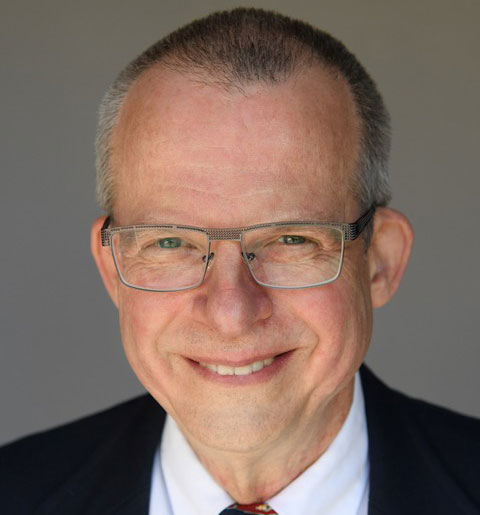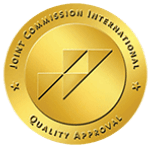Oxycodone Addiction Treatment
As we navigate the ongoing opioid crisis, the importance of addressing Oxycodone addiction cannot be overstated. Opioids, including Oxycodone, are highly addictive, triggering powerful reward centers in the brain by releasing endorphins. This powerful grip of addiction has led to a surge in opioid use disorders, making it a pressing public health issue.
This is where Bayview Recovery in Tacoma, Washington, comes into the picture. At Bayview, we understand the complexities of Oxycodone addiction and the imperative need for personalized, compassionate care. Our team of dedicated professionals employs a holistic approach to recovery, combining medical treatments with psychological support to address the root causes of addiction and equip individuals with the tools they need for long-term recovery.
At Bayview Recovery, we believe in empowering individuals to reclaim their lives from addiction. If you or a loved one is struggling with Oxycodone addiction, or another form of opioid use disorder, we’re here to help. Let Bayview Recovery in Tacoma, Washington be your beacon of hope on the journey to recovery.
Bayview Recovery: Oxycodone Addiction Treatment in WA
Oxycodone addiction is a complex medical condition, and recovery can be long and challenging. With the right combination of treatment programs and a plan that is tailored to the individual, treating opioid use disorder is possible.
Addressing this issue requires comprehensive and effective interventions. Evidence-based strategies, including medication-assisted treatment and behavioral therapy, have been shown to be effective in treating substance use disorders and preventing Oxycodone overdose. Furthermore, it’s crucial to approach substance use disorders in a non-stigmatizing manner, respecting the dignity of all people who have and are struggling with addiction.
While there is no one-size-fits-all approach to treating Oxycodone use disorder, the following components are typically part of Oxycodone addiction recovery:

Once you stop using the drug, both physical and emotional withdrawal symptoms are nearly always possible. Getting through these symptoms without professional assistance can be extremely difficult and uncomfortable. For some people, doing so could even be dangerous.
Medically-supervised detox provides the care and support necessary to help people who struggle with an addiction to oxycodone to start their recovery. When you choose this treatment as the first step, this provides a solid foundation for sobriety.
The next step in the recovery process is an inpatient rehab. This type of treatment program provides a controlled and supportive environment that can help ensure sobriety.
Working from a treatment plan tailored to their specific needs, each person attends therapy and support groups on an almost-daily basis. This environment allows patients to heal without outside influences that could trigger them or cause them stress.
Typically, a treatment team will offer different therapeutic options designed to provide a customized experience as patients address their psychological addiction. These can include treatments including:
Outpatient treatment for Oxycodone abuse is the natural next step in a person’s recovery after residential treatment. Continuing treatment helps ensure that the patient has the tools and support they need as they begin to integrate back into their previous routine and life.
Depending on the severity of your Oxycodone addiction, our team may recommend one of three types of outpatient treatment. A partial hospitalization program (PHP) typically combines six to eight hours of treatment and a residential aspect.
The other two outpatient programs, an intensive outpatient program (IOP) and a standard outpatient program (OP), do not typically require that the patient resides at the facility. Instead, they differ in the frequency and length of treatment.
The aftercare component of Oxycodone rehab is vitally important. Though research has shown that relapse commonly occurs during the detoxification phase, it can happen at any time. Having the support and tools to weather the inevitable triggers and challenges that life presents is vital to maintain sobriety and prevent relapse.
There is a range of different types of aftercare services available. A treatment facility might sponsor a support group like Narcotics Anonymous (NA) or facilitate a meeting of its alumni, for example.
Developing a support network of people who understand what the person is going through is vital to their continued sobriety. Sober living housing provides a supportive environment that is drug-free. Sober living can also sometimes include access to job search services, transportation, and other related services.
What Does the Oxycodone Withdrawal Timeline Look Like?
The timeline for Oxycodone withdrawal can vary based on several factors, including the duration of use, the dose, individual health factors, and whether or not the person is quitting cold turkey or tapering off the drug under medical supervision. Here’s a general timeline:
Initial withdrawal symptoms may begin. These can include anxiety, restlessness, insomnia, and excessive yawning.
Withdrawal symptoms typically peak during this time and can include severe flu-like symptoms such as body aches, fever, rapid heartbeat, high blood pressure, sweating, and gastrointestinal issues like nausea, vomiting, and diarrhea. Psychological symptoms like depression and intense cravings may also occur.
Most physical symptoms have subsided, but psychological symptoms may continue, including depression, anxiety, and cravings. Post-Acute Withdrawal Syndrome (PAWS) can occur in some individuals, where certain symptoms like mood swings, sleep disturbances, and cravings may persist for weeks or even months.
It’s essential to note that withdrawal from Oxycodone should be done under medical supervision due to potential complications. A healthcare professional can provide a safe and more comfortable detox process, often using a gradual tapering method to reduce withdrawal severity.
Oxycodone Addiction Explained
Oxycodone addiction is characterized by the chronic use and abuse of Oxycodone regardless of the negative consequences that occur from abusing the drug. This is a serious and widespread issue, particularly in the United States, where it is estimated that up to one million individuals may be grappling with this devastating dependency.
The statistics surrounding Oxycodone addiction are alarming. Continued misuse of opioids can lead to a range of serious health complications, including overdose and death. Moreover, the societal costs associated with this form of drug abuse, from healthcare expenses to crime-related costs, are staggering.
Oxycodone, is commonly prescribed for moderate to severe pain management. Unfortunately, due to its highly addictive nature, even short-term use can lead to addiction and in some cases, fatal overdose. If you’re struggling with oxycodone addiction, contact Bayview Recovery today.

What is Oxycodone?
Oxycodone is a semi-synthetic opioid analgesic found in several prescription drugs like OxyContin and Percocet, and it operates by altering the brain’s perception and emotional response to pain. However, it also induces feelings of relaxation and euphoria, which can lead to misuse and eventual addiction. The potent effect of oxycodone on the brain’s reward system often results in a cycle of dependence, where users require increasing amounts of the drug to achieve the same effects, leading to tolerance and addiction.
Oxycodone is a Schedule II Drug by the DEA
Oxycodone is classified as a Schedule II drug by the Drug Enforcement Administration (DEA). This classification indicates that while the substance has a high potential for abuse, it also has accepted medical uses for treatment. For this reason, opioid medications like Oxycodone are some of the most abused prescription drugs in the world. Abuse of the substance can lead to severe psychological or physical dependence.
What Medications Include Oxycodone?
Oxycodone is a powerful opioid medication primarily used for pain relief. It’s often found in several prescription drugs, either on its own or in combination with other analgesics. Here are some medications that include Oxycodone:
This is an extended-release form of oxycodone, designed to manage moderate to serious pain around the clock.
A combination of oxycodone and aspirin, Percodan is used also used to alleviate moderate to more severe boughts of pain.
This medication combines oxycodone with acetaminophen (Tylenol). It too is also used to relieve moderate to severe pain.
This is a brand name for oxycodone hydrochloride tablets, which are used to manage pain severe enough to require an opioid analgesic.
This is another combination of oxycodone and acetaminophen used to manage pain.
This is an immediate-release oxycodone product that’s used for managing acute and chronic moderate to more serious pain levels.
This is an extended-release form of oxycodone, intended for managing chronic pain severe enough to require daily, around-the-clock, long-term treatment.
This medication combines oxycodone with naloxone and is used to treat severe pain.
This is an immediate-release oxycodone product.
This is another immediate-release oxycodone product, popular outside of the United States.
As has been discussed, the misuse of prescription opioids can lead to addiction, overdose, or even death, especially in individuals with no prior opioid use disorder. Therefore, they should be used under the supervision of a healthcare professional.
What are the Signs and Symptoms of Oxycodone Addiction?
Oxycodone use can lead to a variety of signs and symptoms, which may vary among individuals. However, there are common indicators that might suggest someone is engaging in substance abuse with this powerful opioid. These may include both physical and behavioral signs.
Physical signs of Oxycodone abuse include:
- Drowsiness: Oxycodone can cause extreme sleepiness, making the user appear lethargic or dazed.
- Constipation: Opioids slow down the digestive system, leading to persistent constipation.
- Dry mouth: This is a common side effect of many prescription medications, including oxycodone.
- Sweating: Excessive sweating, even without physical exertion, can be a sign of drug abuse.
- Decreased pupil size: Known as miosis, this can occur even in bright light conditions.
- Physical dependence and withdrawal symptoms: Symptoms such as restlessness, muscle and bone pain, insomnia, diarrhea, vomiting, cold flashes with goosebumps, and involuntary leg movements can occur if the drug use is reduced or stopped.
Behavioral signs of Oxycodone abuse include:
- Mood swings: Users may shift rapidly between euphoria (feeling high) and dysphoria (feeling low).
- Changes in sleep patterns: This could involve sleeping more than usual or at odd times.
- Decreased social activities: Users might withdraw from friends, family, and activities they once enjoyed.
- Neglecting responsibilities: This could include poor performance at work or school or neglecting household duties.
- Doctor shopping: Individuals may visit multiple doctors to obtain more prescriptions for the drug.
- Financial difficulties: Spending a significant amount of money to obtain the drug, which may lead to financial trouble.
If you or someone you know exhibits these signs and symptoms, it’s important to seek professional help. Substance abuse disorders are serious but treatable conditions, and early intervention can be crucial for successful recovery.

How Do I Know If I’m Physically Dependent on Oxycodone?
Physical dependence on Oxycodone is characterized by the occurrence of withdrawal symptoms when the drug use is stopped or reduced. It’s crucial to understand that dependence can occur even with prescribed use of the medication, under a healthcare professional’s guidance, and does not necessarily indicate addiction, which involves compulsive drug-seeking behavior despite its negative consequences.
Here are some signs indicating dependence on Oxycodone:
- Tolerance: Over time, you may notice that you need higher doses of the medication to achieve the same pain-relieving effects. This is known as building a tolerance.
- Withdrawal Symptoms: If you miss a dose, try to cut down, or stop using Oxycodone, you may experience withdrawal symptoms. These can include restlessness, muscle and bone pain, insomnia, diarrhea, vomiting, cold flashes with goosebumps, and involuntary leg movements.
- Cravings: You may find yourself thinking about the drug constantly and obsessing over your next dose.
- Continued Use Despite Negative Consequences: If you continue to use Oxycodone despite it causing problems in your life, such as affecting relationships, work, or school performance, this could be a sign of dependence.
- Inability to Stop or Control Use: If you’ve tried to cut down or quit using Oxycodone but haven’t been able to, this could indicate a problem.
If you recognize these signs in yourself, you should consider reaching out to our beautiful Oxycodone Addiction Treatment Facility in Washington State for assistance. Bayview Recovery can provide you with the support and resources you need to address your dependence safely and effectively.
Contact Bayview Recovery
Bayview Recovery offers comprehensive Oxycodone addiction treatment options that are focused on the individual’s needs. Supportive and caring, our staff is invested in each of our patients as they move through the phases of recovery. Contact us today to learn more about what Bayview Recovery has to offer.
https://www.dea.gov/factsheets/oxycodone
https://www.justice.gov/archive/ndic/pubs6/6025/6025p.pdf
https://nida.nih.gov/research-topics/opioids
https://www.eeoc.gov/laws/guidance/use-codeine-oxycodone-and-other-opioids-information-employees
https://www.deadiversion.usdoj.gov/drug_chem_info/oxycodone.pdf
https://www.fda.gov/drugs/drug-safety-and-availability/fda-identifies-harm-reported-sudden-discontinuation-opioid-pain-medicines-and-requires-label-changes
https://www.ncbi.nlm.nih.gov/books/NBK310652/
https://www.samhsa.gov/medications-substance-use-disorders
Dave Cundiff, MD, MPH is an experienced leader in the field of Substance Use Disorder treatment. He works with patients suffering from Substance Use Disorder to evaluate their medication needs and prescribe treatments accordingly. In addition, he regularly participates in all-staff debriefing sessions involving peers, nurses, and other prescribers. He also reviews and advises on policies, procedures, and techniques for treating substance use disorder.




